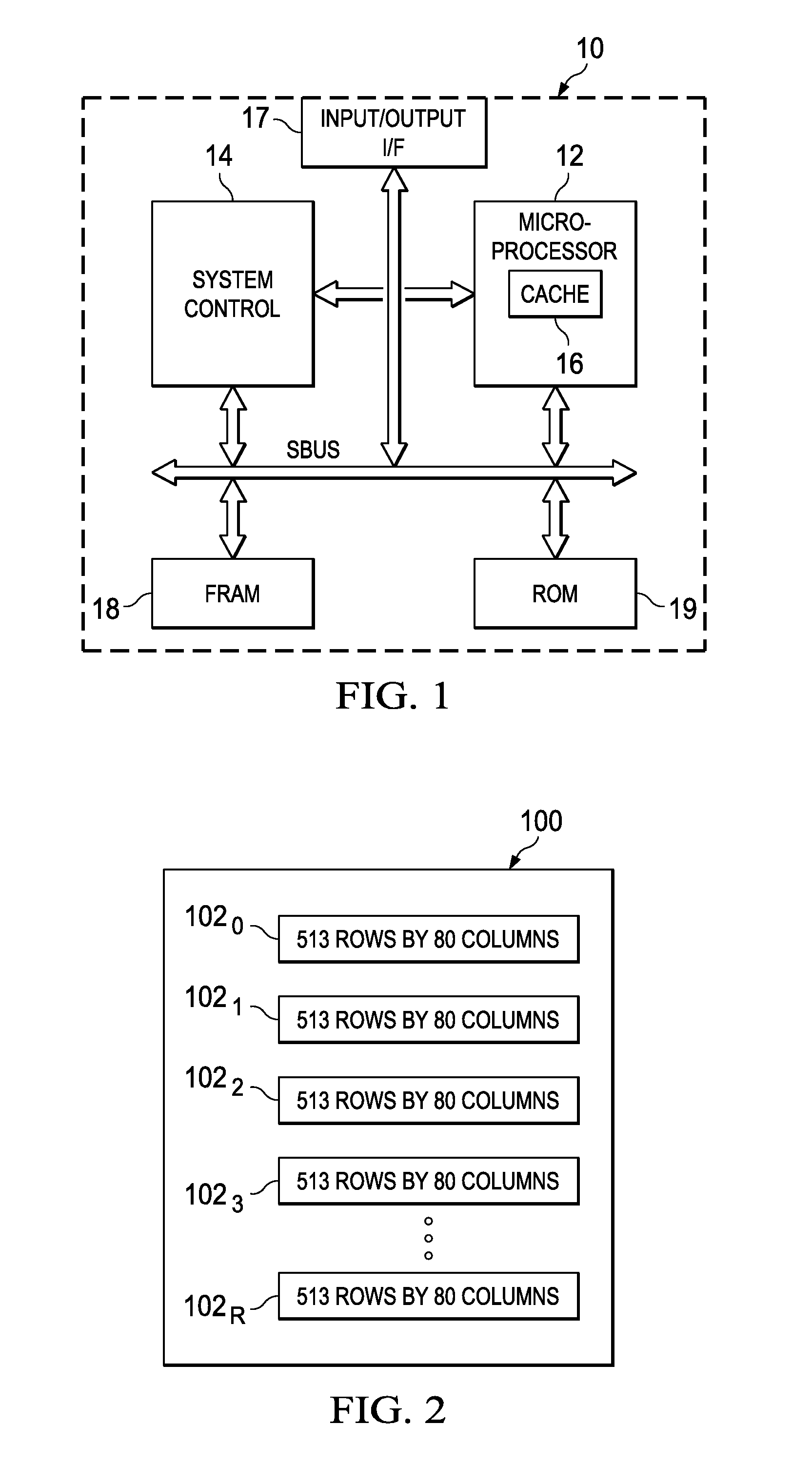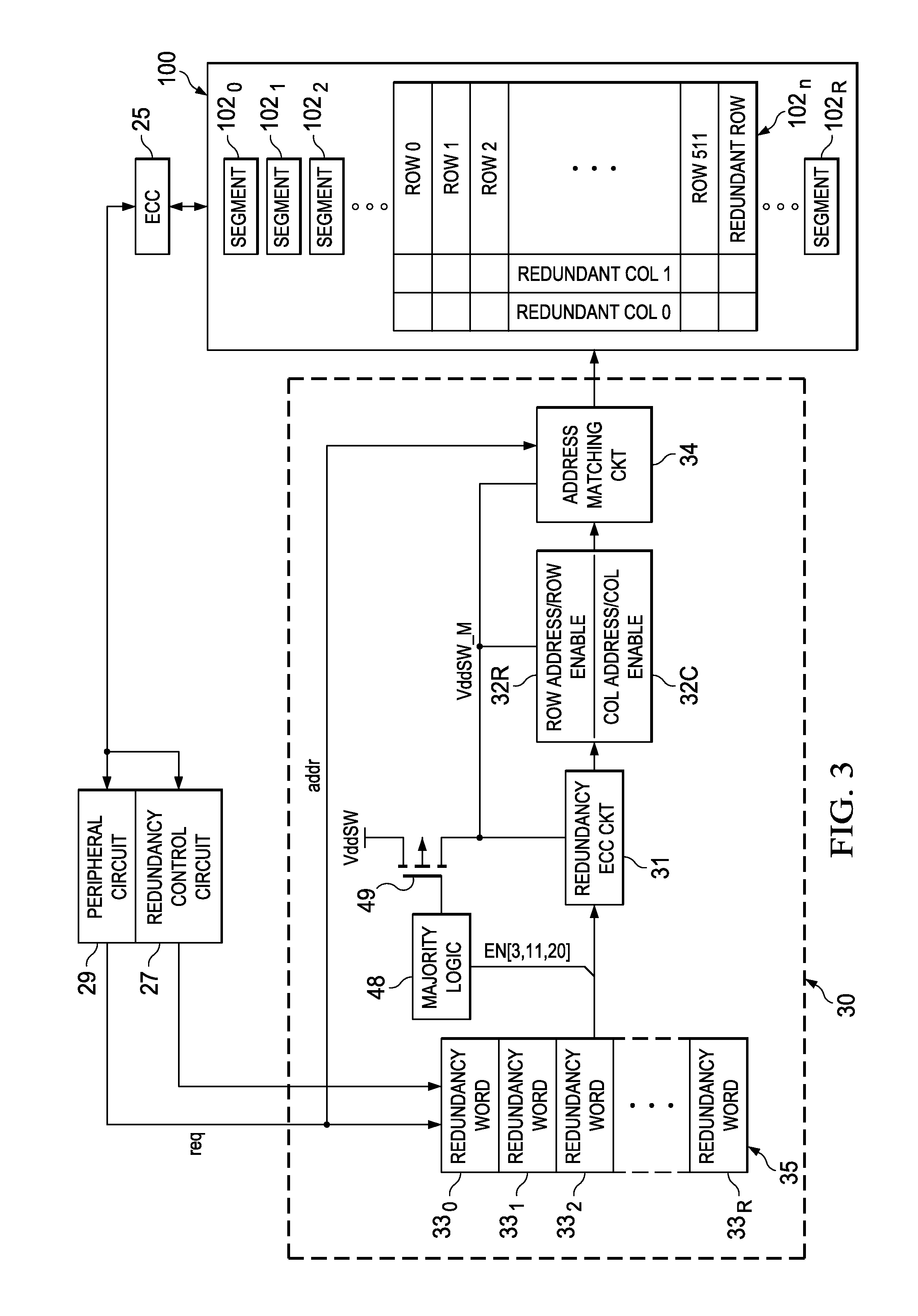Low-Power Redundancy for Non-Volatile Memory
- Summary
- Abstract
- Description
- Claims
- Application Information
AI Technical Summary
Benefits of technology
Problems solved by technology
Method used
Image
Examples
Embodiment Construction
[0026]The present invention will be described in connection with its embodiments, namely as implemented into an integrated circuit including a ferroelectric random access memory (FRAM, or FeRAM), because it is contemplated that this invention will be of particular benefit in such an application. However, it is also contemplated that this invention may be used to advantage in other memory and integrated circuit architectures beyond that described herein. Accordingly, it is to be understood that the following description is provided by way of example only, and is not intended to limit the true scope of this invention as claimed.
[0027]Modern solid-state memory is realized by various memory technologies. Static random access memory (SRAM) is now commonplace in many modern electronic systems. As is fundamental in the art, SRAM cells store data “statically”, in that the stored data state remains latched in each cell so long as power is applied to the memory. Typically, each SRAM cell is c...
PUM
 Login to View More
Login to View More Abstract
Description
Claims
Application Information
 Login to View More
Login to View More - R&D
- Intellectual Property
- Life Sciences
- Materials
- Tech Scout
- Unparalleled Data Quality
- Higher Quality Content
- 60% Fewer Hallucinations
Browse by: Latest US Patents, China's latest patents, Technical Efficacy Thesaurus, Application Domain, Technology Topic, Popular Technical Reports.
© 2025 PatSnap. All rights reserved.Legal|Privacy policy|Modern Slavery Act Transparency Statement|Sitemap|About US| Contact US: help@patsnap.com



